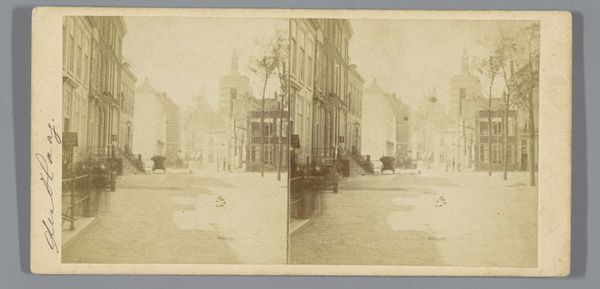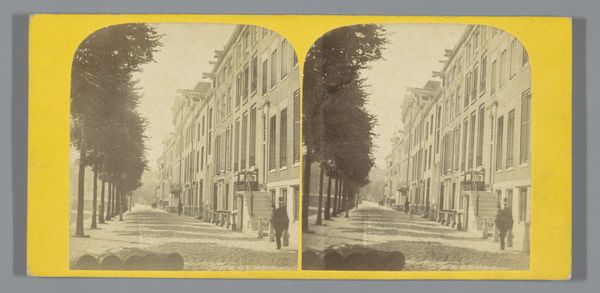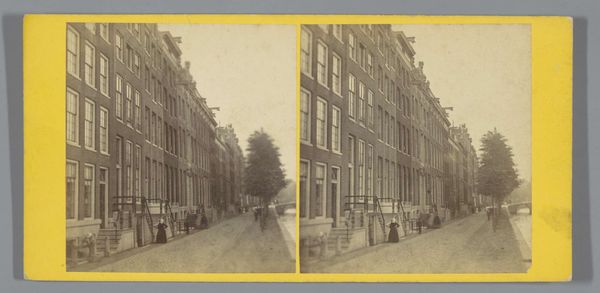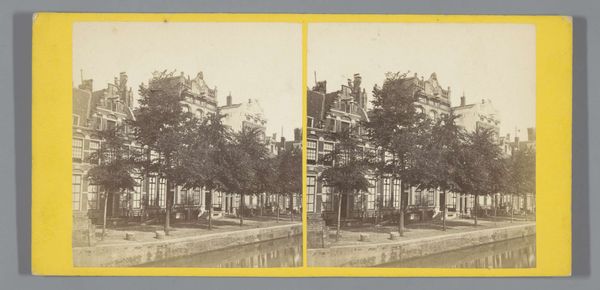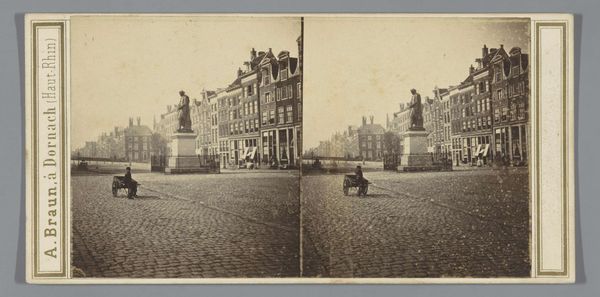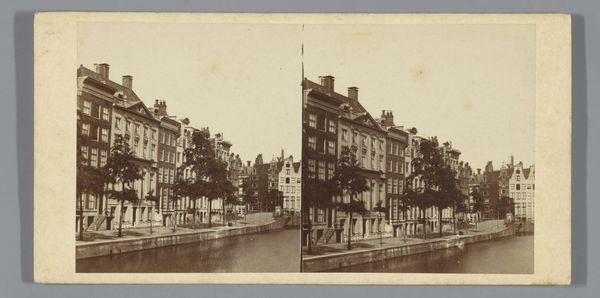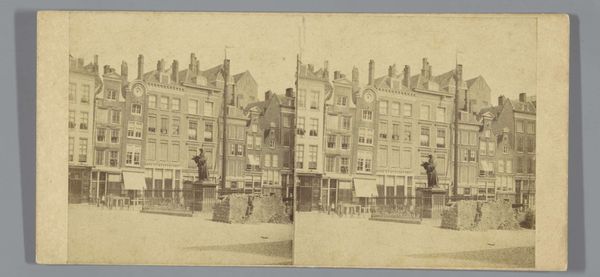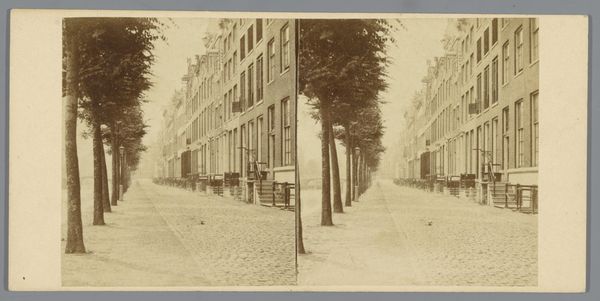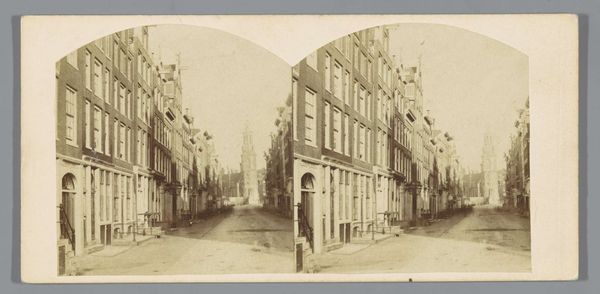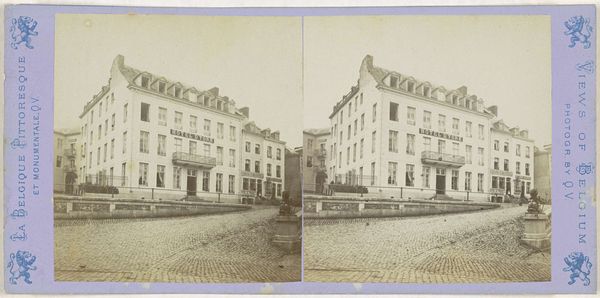
photography, gelatin-silver-print
#
dutch-golden-age
#
photography
#
gelatin-silver-print
#
cityscape
#
street
Dimensions: height 82 mm, width 176 mm
Copyright: Rijks Museum: Open Domain
Curator: Looking at this gelatin silver print, "Rokin in Amsterdam" by Pieter Oosterhuis, dated sometime between 1855 and 1870, I'm immediately struck by the somber mood. There’s an almost ghostly quality to the light and the deserted street. Editor: Deserted indeed! But I'd say it’s more melancholic than somber. Think of what industrial progress and the expansion of capitalism did to the urban landscapes of the time. To me, the emptiness hints at social dislocation, the alienation of labour as older patterns of life get steamrolled. Curator: An interesting take. I’m intrigued by the repetition of architectural elements; the near-identical facades, the symmetry reinforced by the double image format, create an almost hypnotic effect. It emphasizes a specific cultural order. Editor: Right, that kind of regulated repetition of facades reinforces a social hierarchy; it projects power but can be read as uniformity as well, flattening individual expression beneath capitalist ideals. What's compelling to me, in terms of social narrative, is the utter lack of people—this photograph seems to remove them entirely from their environment. Curator: Perhaps it speaks to the limitations of early photography? The exposure times wouldn’t have captured fleeting movement, essentially erasing everyday life. It can't represent, fully, the diversity of life, as we know it would have existed back then. And the symbolism, such as it exists here, has to be teased out… the lamplight, for instance, represents "enlightenment," of a sort… it certainly signifies something of cultural value at the time. Editor: Precisely, because these processes influenced not just what could be captured, but what was deemed worthy of being captured. Consider whose stories were, and were not, being told in that era. While technological limits contributed, the framing of cityscapes within Western, capitalist narratives of progress seems paramount here. The gas lamp stands for the imposition of artificial rhythms of time onto city inhabitants; a sign of urban space designed for capital. Curator: I find this photograph speaks to the enduring fascination with urban environments – how cities shape human experiences, for better and for worse. Editor: Indeed. It reminds us to question whose stories and whose vision of progress are imprinted within these landscapes and how it continues to influence us. It’s more than just aesthetics, and certainly it shows us how deeply entwined the social and the visual truly are.
Comments
No comments
Be the first to comment and join the conversation on the ultimate creative platform.
